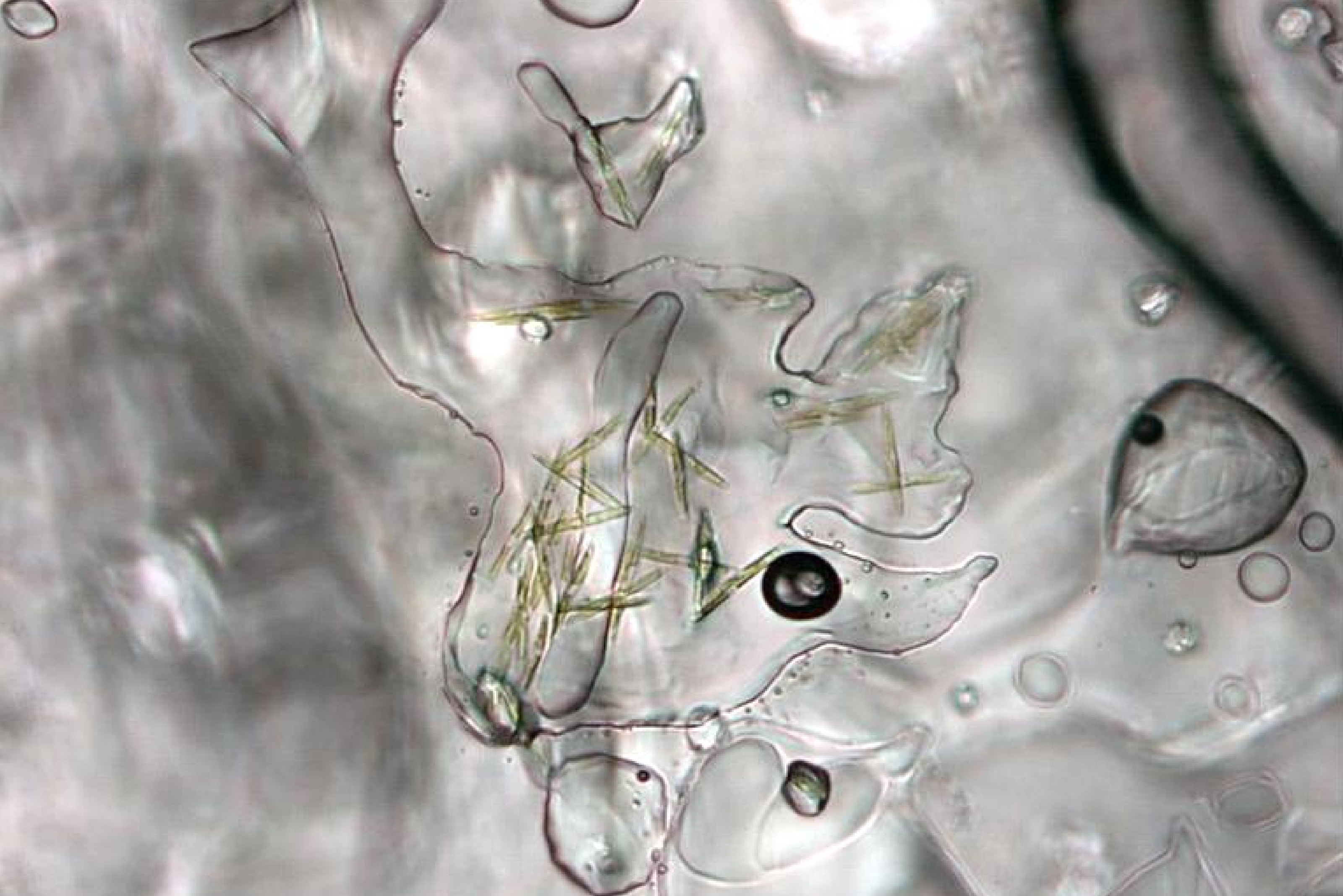
Polar Alga in a Frozen Ocean
Biologists from Konstanz involved in decoding the genome of an Antarctic alga and thus in gaining new insight into the alga's adaptation to polar life.
The Antarctic Ocean surrounds the continent Antarctica and, despite its seeming hostility to life, is home to an astonishing diversity of life forms, ranging from minute unicellular organisms to the world's largest animal, the blue whale. These ecosystems are based on photosynthetic algae. One of the most relevant representatives of this group is the diatom Fragilariopsis cylindrus. This species lives both inside sea ice at temperatures significantly below freezing and planktonic within open water. An international consortium of 44 researchers from six different countries, including the Konstanz algal researchers Dr. Ansgar Gruber and Professor Peter Kroth, have succeeded in decoding the genome of this diatom. The results of the project were published in the renowned scientific journal Nature in January, providing insight into the alga's adaptations for life in the Antarctic Sea. Read more online at http://dx.doi.org/10.1038/nature20803
Such adaptions include ice-binding proteins, which can change the structure of growing ice crystals to protect the single-celled alga, and copper- or zinc-binding proteins, which can replace the iron-binding proteins during iron limited growth conditions (a common challenge in the Antarctic Ocean). The architecture of the Fragilariopsis cylindrus genome is diploid (genes are present in two copies, corresponding to the maternally and paternally inherited portions of the human genome); however, in the case of Fragilariopsis cylindrus the researchers made an unexpected discovery: the sequences diverge between many of the two copies much more than in other organisms. Furthermore, the function of these dissimilar gene pairs are also regulated differently: The higher the difference in sequence between both copies is, the more the gene function is regulated differentially to each other. Diatoms usually multiply as identical copies of the mother cell (clonal), so the allele divergence is passed on to the daughter cells. However, sexual reproduction also occurs in diatoms, and with each round of sexual reproduction, the dissimilar gene pairs are recombined. This discovery shows how the ability for genetic adaptation may be maintained in a unicellular organism.
The Fragilariopsis cylindrus genome project’s results are particularly interesting because environmental conditions in the polar seas are currently changing as a consequence of global warming. How diatoms react to these changes will be crucial for ocean ecosystems – and therefore not least also for the future of us humans.
Original Publication:
Mock, T. et al. (2017): Evolutionary genomics of the cold-adapted diatom Fragilariopsis cylindrus. Nature 541, 536–540, 26 January 2017. http://dx.doi.org/10.1038/nature20803
Facts:
- The 44 scientists involved are working at institutions in Great Britain, the US, Italy, Germany, France and Canada.
- The genome sequence of Fragilariopsis cylindrus is publicly available at the genome portal of the American Department of Energy Joint Genome Institute (JGI), where large parts of the sequencing was carried out: http://genome.jgi.doe.gov/Fracy1/Fracy1.home.html
- More information about the life of polar diatoms can be found in the "behind the paper", an article by Professor Thomas Mock, University of East Anglia, coordinator of the Fragilariopsis cylindrus genome project: http://go.nature.com/2hV8UAy
- Fragilariopsis cylindrus was declared "alga of the year 2011" by the members of the Phycology (algal research) Section of the German Society for Plant Sciences (Deutsche Botanische Gesellschaft, DBG). Further information and photos of this alga can be found on the internet page of the Phycology Section: http://dbg-phykologie.de/alge-des-jahres/alge-des-jahres-2011.html
